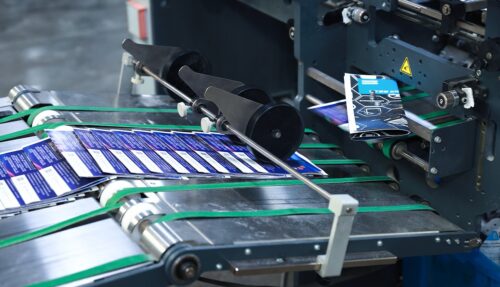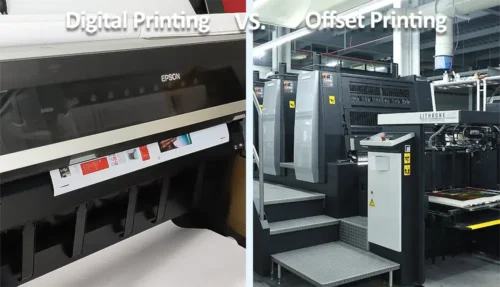How to survive a volatile paper market and keep costs down

If your business depends on print—whether in publishing, education, marketing, or beyond—you’ve likely noticed the sharp rise in paper costs. The question is, why is this happening, and how will it impact the future of your print projects? From budget strains to supply chain disruptions, the soaring price of paper has become a complex challenge across industries.
At our custom printing service, we know how important it is to stay on budget. That’s why we’re working tirelessly to absorb these increases and offer consistent, high-quality printing without breaking the bank. But what’s driving this climb in paper costs, and what steps are we taking to keep your costs under control? Let’s break down the forces behind this shift and how we’re working to protect your bottom line.
Key paper market trends at a glance
| Feature | Impact on Paper Costs |
|---|---|
| Energy Prices | Energy accounts for 25–30% of paper production costs; rising fuel and electricity prices increase overall costs. |
| Raw Material Scarcity | Limited availability of pulp and recycled materials drives up prices. |
| Labor Shortages | Shortages in skilled labor lead to increased wages and production delays. |
| Supply Chain Disruptions | Global logistics challenges and shipping delays contribute to cost volatility. |
| Tariffs and Trade Policies | Import tariffs on paper and related materials affect pricing structures. |
Why is the cost of paper still going up?
The reason for the sharp increase in the cost of paper products over the last several years is complex. But it may surprise you to know that it’s not to do with deforestation. In any case, good modern printers understand the importance of working toward sustainable business practices and—as we do—source their paper from FSC-certified suppliers and use recycled materials wherever possible.
The cost of paper has increased so much because of collateral changes in the wider market. Rising gas and electricity costs linked to geopolitical events, limited resources, changing supply chains, the economic after-effects of the global pandemic, and shifts in the rates of production are several core factors which impact the price of paper manufacture and distribution. The chemicals used in raw paper production cost more now, and that also contributes to rising prices. Add to these factors changes in the labor market and fluctuations in industrial relations and you have a perfect storm.
During the pandemic, many paper mills were forced to close, some of them permanently. Others switched production from fine papers to packing-grade cardboard. With entire populations worldwide staying home and businesses putting on the brakes, the demand for fine paper decreased. Meanwhile, the lockdowns led to a boost in e-commerce and a consequent surge in the demand for packaging materials.
Within the United States, the cost of posting and shipping has seen increases, too. It’s often cheaper now to use foreign printing services as the cumulative costs of paper, printing, and shipping are lower than domestic supply. China, for example, is a world leader both in printing technology and low-cost production with options to ship to the US by air or sea, allowing a range of options to balance speed against cost according to a client’s needs.
How paper manufacturing impacts costs
To appreciate how all the factors cited above contribute to the cost of paper production, it’s important to understand how paper is made. While other materials are used occasionally—such as cotton, straw, linen, hemp, and bamboo—most paper products are made from mainstream forestry byproducts. So, when those parts of felled trees which are useful for construction timber or for furniture-grade applications have been removed, the remaining wood is used to make paper.
In the first stage of the process, the wood material is turned into a pulp. This can be done by mechanical or chemical means. Chemical pulping is the most common method deployed and is a surprisingly environmentally friendly and energy-efficient process. The wood is reduced to chips—using a wood chipper much like those professional gardening services use but built on a much larger scale—and mixed in vats with chemicals which help break down the fibers. The mixture is heated to high temperatures to speed up the process. The pulp is then extracted. The chemicals are recovered and recycled to use again, while the organic waste is burned to fuel the paper plant and any excess energy can contribute to the national grid supply.
The pulp is pressed through several wet and dry stages on a huge rolling machine that flattens and compresses the fibers. The resulting paper is then dried out and rolled. Once cured, it’s cut and packaged for distribution.
As you can see—even while it’s a fairly closed and energy-efficient system—a large paper mill consumes a lot of energy, water, and other products.
Must rising paper costs always be passed to the customer?
As paper prices soar, many printing companies have had no choice but to raise their own prices to stay afloat. This creates a ripple effect that impacts not just us, but our clients—many of whom can’t simply pass these costs along to their own customers, especially when print products aren’t intended for resale. It’s a challenge that tests our industry’s resilience and asks: can we continue to provide quality at a reasonable cost when the market pushes against us?
That’s why, at QinPrinting, we’ve taken proactive steps to shoulder as much of the burden as possible. Through sharp management and strategic adjustments, we’re working to keep prices steady and competitive, even in the face of unavoidable cost increases. It’s no small feat, but it’s a commitment we make to you—and one that keeps us focused on value, fairness, and helping our clients thrive despite market turbulence.
How can we keeps costs down in the face of rising paper prices?
We know that rising paper costs impact your budget, so at QinPrinting, we’ve implemented several strategies to keep our printing prices competitive and fair, even as costs rise across the industry. Our key approaches include:
- Scaling up production
- Streamlining internal processes
- Boosting efficiency and optimizing technology
- Working closely with suppliers to secure favorable terms
- Reducing our own profit margin
The paper market faces ongoing price volatility, with some suppliers anticipating increases of up to 15% into 2026 due to persistent supply-chain issues, energy costs, and fluctuating demand. Though the market may stabilize as new production facilities come online and global logistics improve, unpredictable factors such as geopolitical disruptions and labor shortages continue to drive instability.
At QinPrinting, we’re dedicated to closely monitoring these changes and adjusting to keep costs manageable while delivering the high-quality, sustainable print products our clients rely on. Whatever the market brings, you can trust us to provide exceptional value, professional service, and the customer care you expect.
FAQs
1. How can I reduce printing costs without compromising quality?
2. Are recycled papers more expensive than virgin papers?
3. How do shipping costs affect my printing expenses?
Shipping costs can significantly impact the total expense, especially for international deliveries. Consolidating orders and choosing economical shipping methods can help mitigate these costs.
4. What is FSC certification, and why is it important?
FSC (Forest Stewardship Council) certification ensures that the paper comes from responsibly managed forests. Using FSC-certified paper supports sustainable practices and can enhance your brand’s environmental credibility.
5. Can digital printing be a cost-effective alternative?
Digital printing is ideal for short runs and quick turnarounds, often resulting in lower costs for small quantities. For larger volumes, offset printing may be more economical.
6. How do fluctuations in currency exchange rates impact printing costs?
7. What steps is QinPrinting taking to ensure sustainability?
Talk to us. We're here to make life—and business—easier!
So, if you have concerns about the impact of ongoing increases in the cost of paper on your print-necessary projects, keep calm—we’ve got your back. Get in touch with us today for an informal chat about the possibilities we can offer you and for a no-obligation quote. We’ve got decades of experience and an enthusiastic team of expert staff on hand to help. And remember, we have an unwavering commitment to offer high-quality services at competitive prices, always. It’s a fundamental aspect of our corporate ethic.
Shoot us an email at [email protected] or call us at +1 951 866 3971, and we’ll be delighted to discuss your needs.
Note: The information provided is based on current industry insights and may be subject to change as market conditions evolve.










